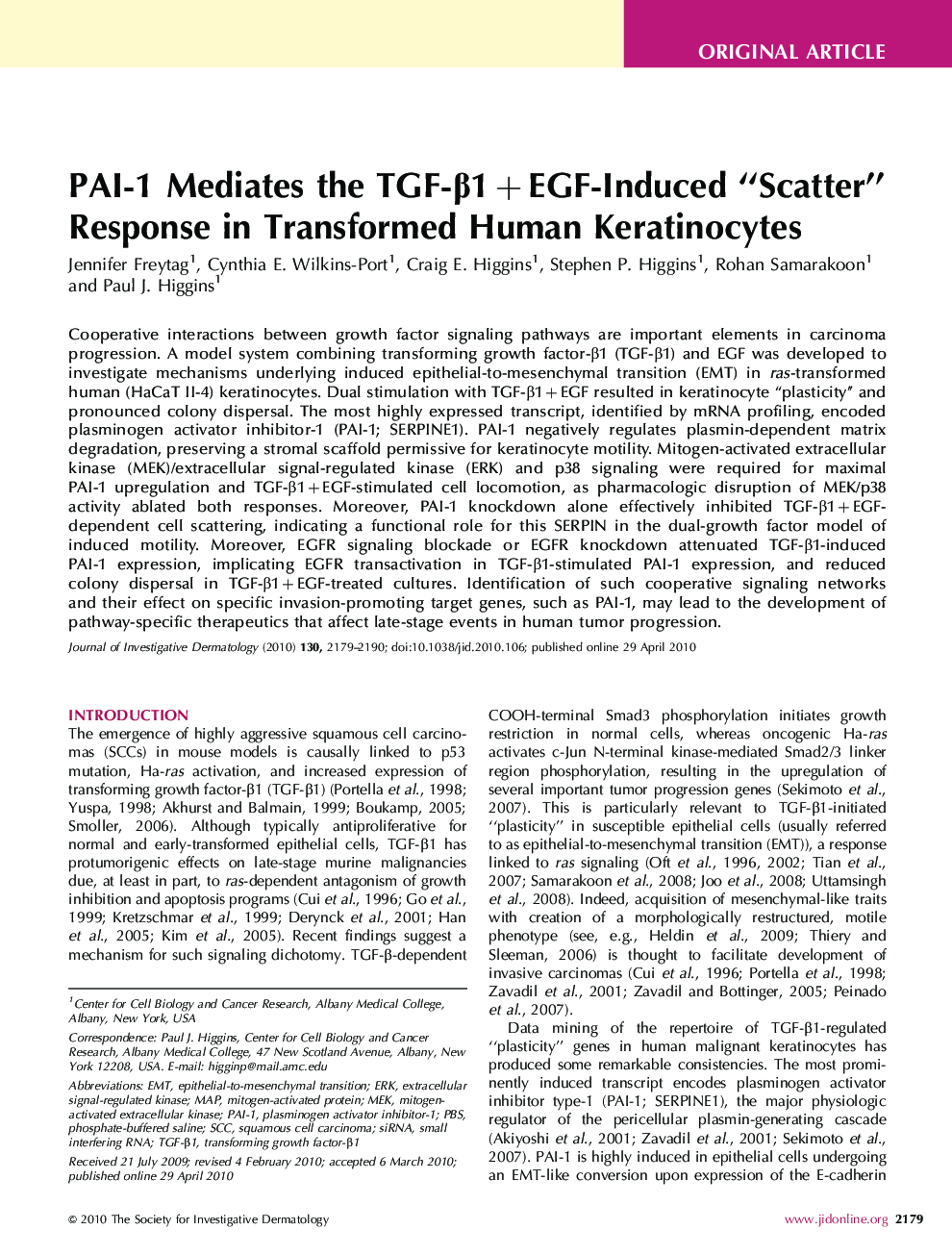| Article ID | Journal | Published Year | Pages | File Type |
|---|---|---|---|---|
| 3217130 | Journal of Investigative Dermatology | 2010 | 12 Pages |
Cooperative interactions between growth factor signaling pathways are important elements in carcinoma progression. A model system combining transforming growth factor-β1 (TGF-β1) and EGF was developed to investigate mechanisms underlying induced epithelial-to-mesenchymal transition (EMT) in ras-transformed human (HaCaT II-4) keratinocytes. Dual stimulation with TGF-β1+EGF resulted in keratinocyte “plasticity” and pronounced colony dispersal. The most highly expressed transcript, identified by mRNA profiling, encoded plasminogen activator inhibitor-1 (PAI-1; SERPINE1). PAI-1 negatively regulates plasmin-dependent matrix degradation, preserving a stromal scaffold permissive for keratinocyte motility. Mitogen-activated extracellular kinase (MEK)/extracellular signal-regulated kinase (ERK) and p38 signaling were required for maximal PAI-1 upregulation and TGF-β1+EGF-stimulated cell locomotion, as pharmacologic disruption of MEK/p38 activity ablated both responses. Moreover, PAI-1 knockdown alone effectively inhibited TGF-β1+EGF-dependent cell scattering, indicating a functional role for this SERPIN in the dual-growth factor model of induced motility. Moreover, EGFR signaling blockade or EGFR knockdown attenuated TGF-β1-induced PAI-1 expression, implicating EGFR transactivation in TGF-β1-stimulated PAI-1 expression, and reduced colony dispersal in TGF-β1+EGF-treated cultures. Identification of such cooperative signaling networks and their effect on specific invasion-promoting target genes, such as PAI-1, may lead to the development of pathway-specific therapeutics that affect late-stage events in human tumor progression.
